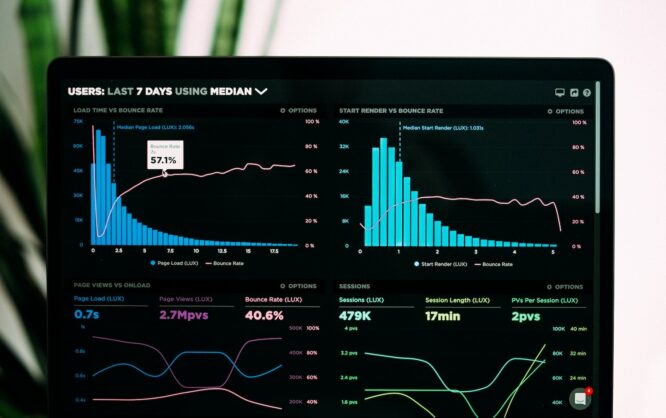Is Python Recommended for Data Visualization?

With the ever-growing demand for data in the world around us, organizations are in a rat race of sorts to improve data accumulation methods and improve the overall efficiency of their data.
Data visualization is an integral part of the data revolution today and has helped many organizations come out on top as far as customer data and equipment data is concerned. Data visualization has popped up as an important tool recently, as it helps businesses grow and compete in the ever-changing world to improve their bottom line for further growth.
Data visualization tools has played a key role in helping organizations grow and become more competitive in the data-centric world of today. Stats from 2020 reveal that a staggering 67 percent of all small businesses were spending over $10k towards data analytics and other related measures. This percentage itself is an indication of the growing importance of data and how it matters in the world today.
Understanding Data Visualization
The growing traffic of data from multiple sources has created a problem of sorts for organizations. Companies with large customer bases may find it hard to keep track of all customers and demand metrics, especially since trends are regularly changing.
Generating data from customers is one thing and working on that data to churn out actionable insights is another. Companies with large customer bases find it hard to gather data in a simple format and get structured results from it.
Organizations and business managers looking to make sense out of their data have to come up with new visualization methods so that their data is easy to understand and accessible to all. To ensure that you utilize the full potential of your data, it is necessary that you group it and visualize it in the following ways:
- Charts
- Scatter plots
- Histograms
- Maps
- Diagrams
- Matrices
- Dendrograms
- Timelines
- Treemapping
- Tables
The terabytes of data you have currently accessible to you are just a bunch of jumbled numbers in their raw form. Unless you structure and visualize that data, you will not be able to make sense and decisions out of it. Visualizations make the process of structuring and understanding data easier and give users a simple way to generate results.
With the access of data from multiple sources, data visualization has also proved to be a technically tough nut to crack. Organizations can either head to third-party solutions or use the skills of in-house developers and harness the potential of Python for the job.
Languages like PHP and others have long been preferred for visualization techniques, but Python developers can use the potential of the language to increase efficiency and incorporate the true benefits of the programming language.
Let us study Python as a programming language today and look at the potential it hosts for data visualization and other related tasks.
Problems Associated with Python
Just like any other programming language, there are certain problems that you may face while visualizing data using Python. Python inherently lacks the powerful visualization frameworks that you may find in programming languages like PHP. Python does have the potential, but it falls short.
Python comes with Matplotlib, Seaborn, and Pyplot as data libraries, but they are either really heavy or have issues with the syntax.
Advantages of Python
Having looked at the problems associated with Python, we now look at the advantages which make Python recommended for data visualization.
The advantages mentioned below make the programming language a solid option for your data visualization techniques.
Open Source
Python is an open-source programming language, which allows developers to extend it based on the results they prefer. Developers working on Python are always creating new libraries, frameworks, and features, which add to the potential of the language. Python can be easily accessible to all and is free to use.
Simple to Learn
The learning curve for Python isn’t that complex, and your developers will be able to use it for data visualization in no time. Developers will be able to ease into the process and will have no problems whatsoever in integrating Python within the data visualization system of choice.
Connectivity
Perhaps one of the biggest upsides going in favor of Python is that it can connect to almost all database systems on the internet. Regardless of the system, you prefer for data collection, you can connect Python and use them both together.
Scalable for Growth
Scalability is another aspect where Python rises to the challenge and gives amazing results. Python has amazing scalability and can grow with the pace of your data requirements. If you have a business that generates a significant amount of data, python should be able to grow with the pace and match the data generation capabilities.
Major Python Libraries
Python comprises a number of libraries that can help in data visualization. While we did earlier mention that these libraries aren’t as fast as those of PHP, they can still handle the requirements of data visualization and produce exceptional results. Some of the top libraries include:
- Bokeh: The Bokeh library can handle live streaming of data and can create web plots with an interactive design.
- Geoplotlib: The geoplotlib can be used for plotting graphs that display geographical data pertaining to all users.
- Gleam: Gleam gives you the ability to create actionable results and produce interactive applications entirely based on Python.
While Python isn’t considered to be the best option for data visualization, we recommend it because of the scalability and flexibility on offer. The open-source nature of the programming language allows developers to work on it and bring data to life through visualizations.
Photo by Luke Chesser on Unsplash

NICE BLOG